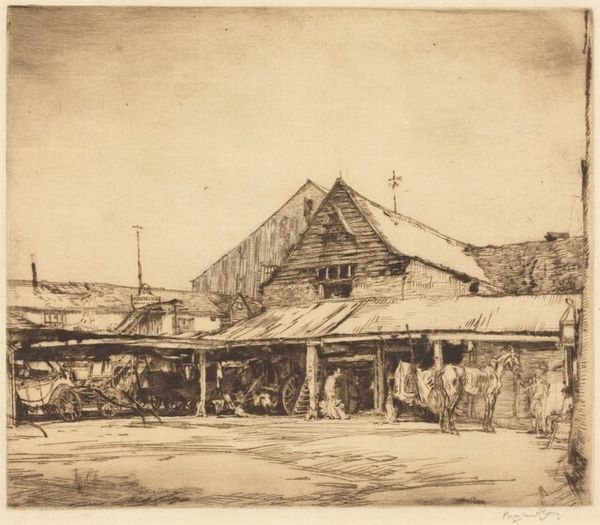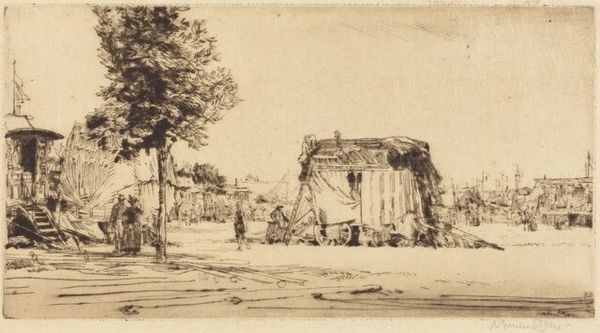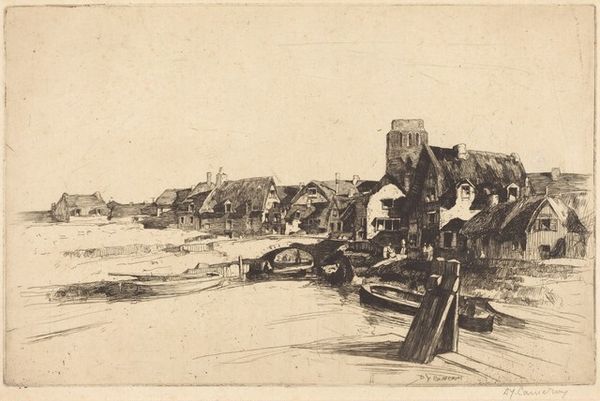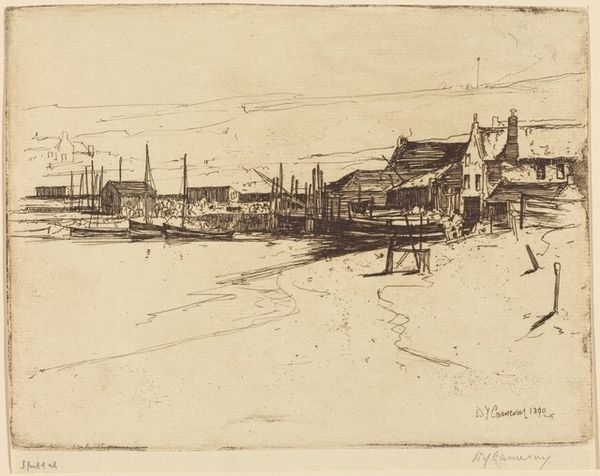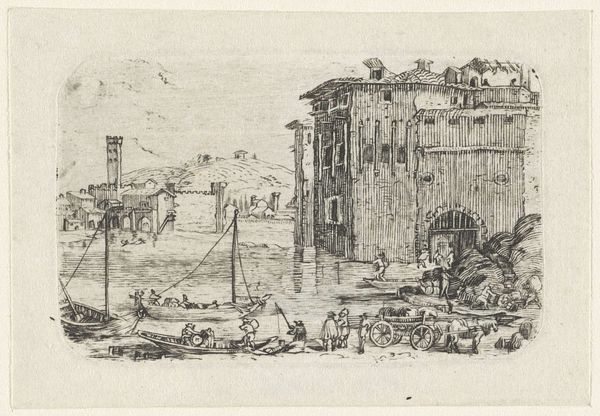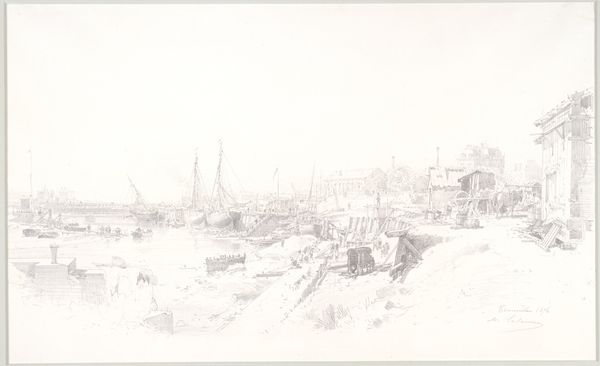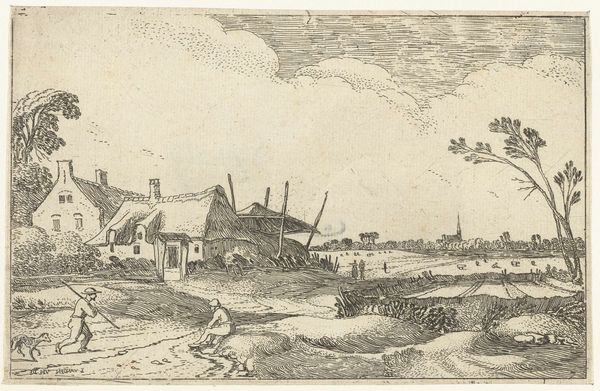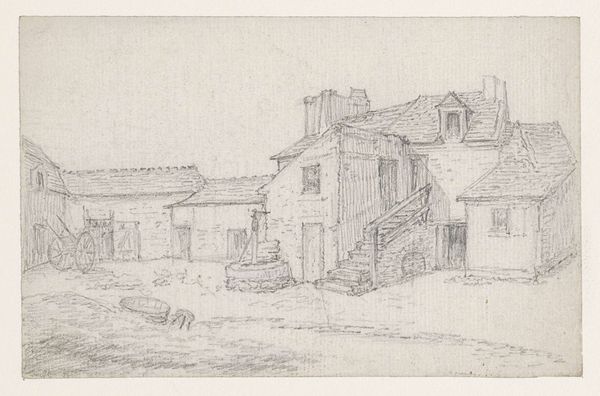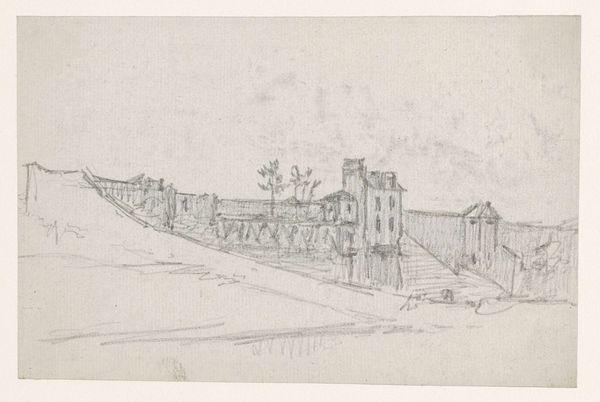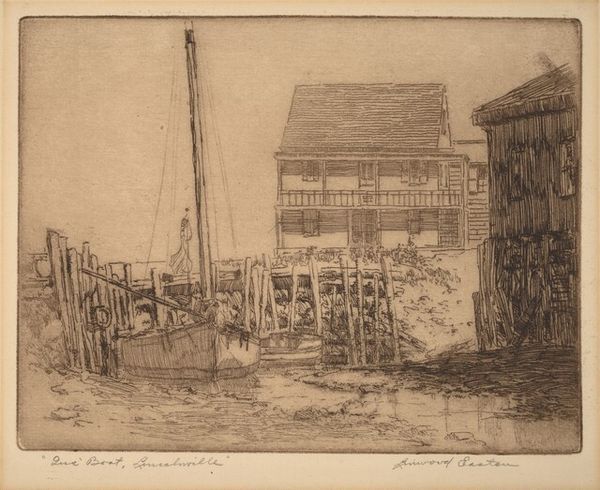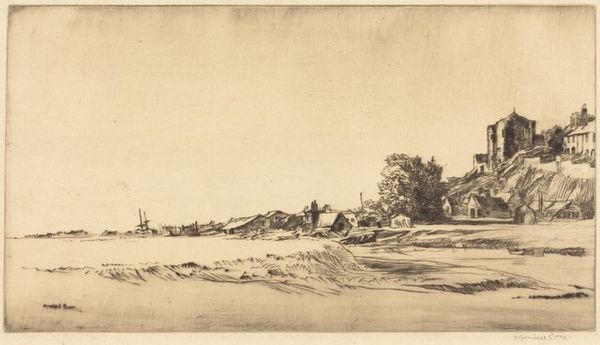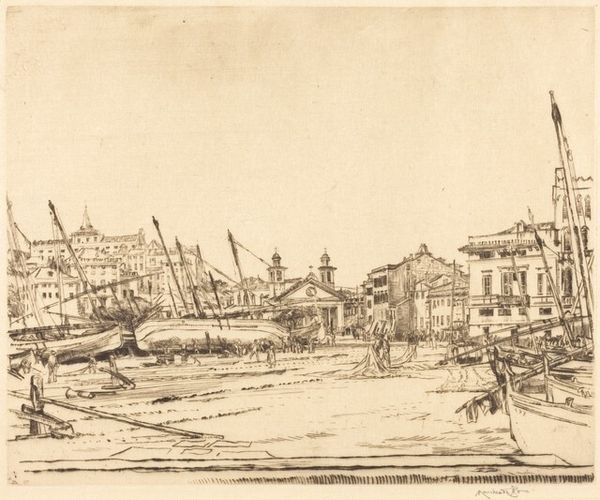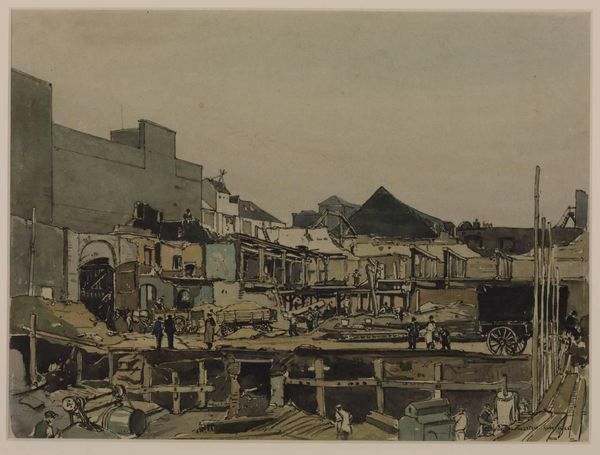
drawing, print, etching
#
drawing
# print
#
impressionism
#
etching
#
landscape
#
realism
Copyright: Public Domain: Artvee
James Abbott McNeill Whistler made this print of the Free Trade Wharf using drypoint. At first glance, the delicate network of lines creates a scene of industrial activity, yet a closer look reveals a study in contrasts and subtle tonal variations. The composition is divided between the open expanse of water and the dense architecture of the wharf. The masts of ships punctuate the skyline, balanced by the solid forms of the buildings. Whistler masterfully uses line to define form and texture. Note how the density of the lines increases in the foreground to convey the solidity of the structures, while the background is suggested with a lighter touch. In "Free Trade Wharf", Whistler is concerned with the formal elements of art – line, tone, and composition – rather than narrative or social commentary. The print challenges traditional artistic values by focusing on the aesthetic potential of an industrial subject. The emphasis on form over content reflects the broader artistic and philosophical shifts of the late 19th century. The etching becomes a site for exploring the shifting perceptions of modernity.
Comments
No comments
Be the first to comment and join the conversation on the ultimate creative platform.
